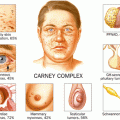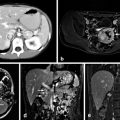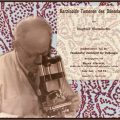Fritz de Quervain, MD
Fritz de Quervain is regarded as one of the last surgical giants, and his obituary appeared in Nature after his death on January 24, 1940 [1].
De Quervain’s most prolific contributions were in thyroid surgery , but he was a true generalist and published widely in diverse areas of surgery.
He was born in Sion, the capital of the Swiss Canton of Valais on May 4, 1868. His family were of Huguenot stock, and de Quervain was one of the ten siblings, most of whom made their own names with substantial achievements in their own right. His recorded birth name was Johann Friedrich de Quervain, but later he called himself Fritz.
De Quervain attended the Lerber School in Bern and, in 1887, began his medical education at the University of Bern. He matriculated at the University of Bern in 1888, and completed medical school in 1892.
During his medical course, de Quervain had the great fortune to be influenced by four eminent individuals—Kocher , Kronecker, Langhans, and Sahli, who helped make the Bern Medical School famous at that time. De Quervain was first an assistant to Hugo Kronecker, a physiologist at the University of Bern, between 1889 and 1891. He was then an assistant to Theodor Langhans, a pathologist in 1891 and 1892. Langhans—who was influenced by Virchow and von Recklinghausen—described the giant cells of the tubercle granuloma. Later in his career, Langhans was particularly interested in the pathology of goitres and cretinism. Another teacher was Hermann Sahli, a notable physician and professor of internal medicine, with particular interests in haematology and haemodynamics.
After graduating in 1892, de Quervain became an assistant in Emil Theodor Kocher’s surgical clinic in Bern at the Inselspital. Within 18 months, he had become the first assistant within that clinic, and eventually succeeded Kocher. Kocher won the Nobel Prize in Physiology or Medicine in 1909 for his work on the physiology, pathology, and surgery of the thyroid gland. While these four giants in physiology, pathology, medicine, and surgery at the Bern Medical School profoundly influenced de Quervain, his professors noted that de Quervain, as a student, demonstrated a clear intellect, a tremendous capacity for work, and an extraordinary memory.
In 1894, de Quervain moved to La Chaux-de-Fonds, a watch-making district in the Neuchâtel Mountains. De Quervain was to remain in La Chaux-de-Fonds for 15 years, and became director of the Surgical Clinic there in 1897. It was during this time that he published prolifically in many areas in surgical journals and textbooks. In La Chaux-de-Fonds, he described the stenosing tendovaginitis affecting the tendons at the wrist, which was subsequently named after him.
Of enterprising nature, de Quervain worked not only in the local hospital at La Chaux-de-Fonds but he also developed his own private clinic and, subsequently, a more modern hospital. In 1898, de Quervain acquired the necessary parts and constructed an X-ray machine in his clinic, only 3 years after X-rays were discovered by Röntgen in 1895.
With this extensive general surgical practice, he had a large pool of patients and became a pioneer in what would now be regarded as clinical research.
De Quervain’s syndrome of repetitive stress injury affecting the thumb, in particular the tendons of abductor pollicis longus and extensor pollicis brevis at the level of the wrist over the radial styloid process, was described in 1895. It is of interest that his mentor, Theodor Kocher , was consulted on this new syndrome of stenosing tendovaginitis . They exchanged details on a number of cases, but it was de Quervain who published his findings, describing five cases in an article in 1895 entitled “On a Form of Chronic Tendovaginitis” [2]. The description and the surgical treatment of this condition have changed little over the past 120 years. De Quervain’s syndrome of stenosing tendovaginitis has had various interesting synonyms attached to it, including mother’s wrist, washerwoman’s sprain, and, in more modern-day parlance, gamer’s thumb, “BlackBerry” thumb, or texting thumb.
Stay updated, free articles. Join our Telegram channel

Full access? Get Clinical Tree








